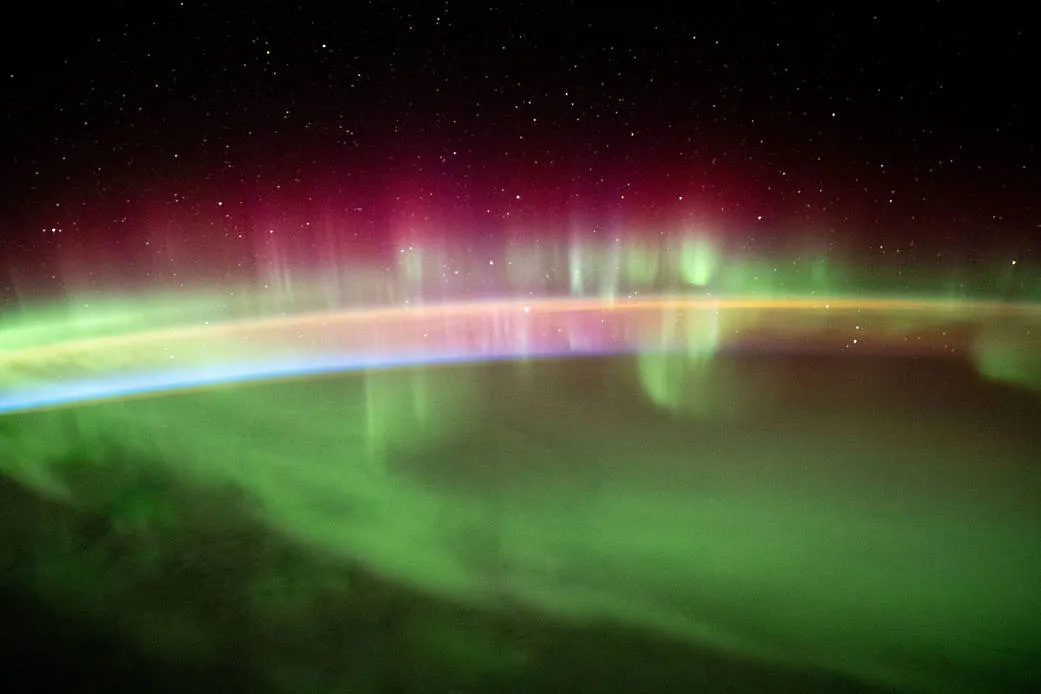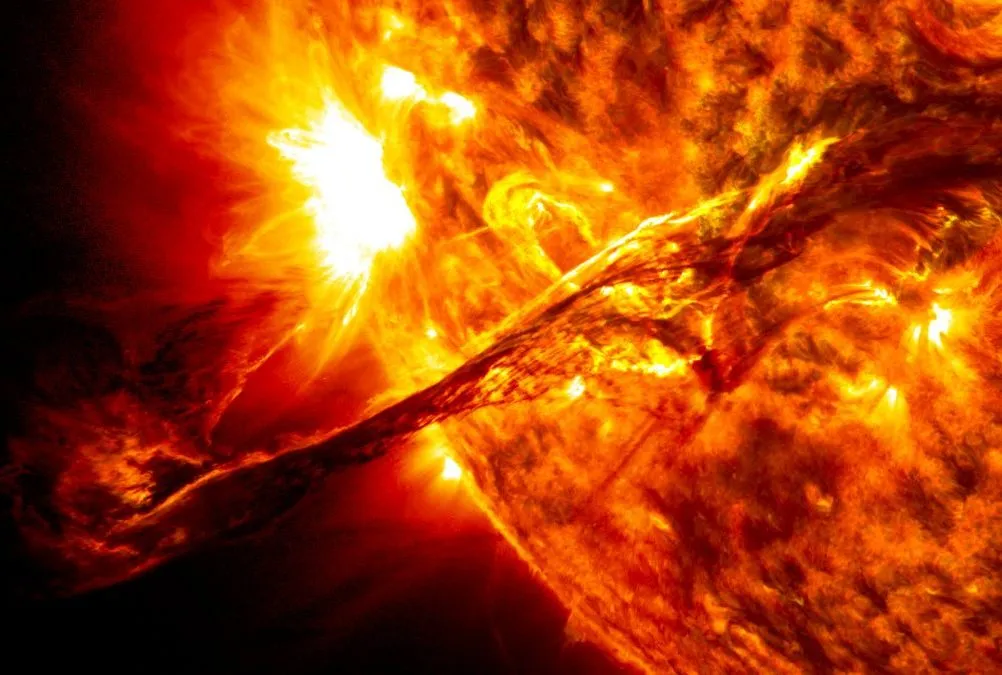NASA’s Perseverance Mars rover has detected green aurora on Mars, marking the first time the phenomenon has been seen from the surface of the planet.
The detection was then confirmed by NASA's MAVEN (Mars Atmosphere and Volatile EvolutioN) spacecraft, which is orbiting the planet.
"This exciting discovery opens up new possibilities for auroral research and confirms that auroras could be visible to future astronauts on Mars’ surface," says Elise Knutsen, a postdoctoral researcher at the University of Oslo in Norway and lead author of the Science Advances study, which reported the detection.

Detecting the aurora
The aurora display detected on Mars by Perseverance was the result of a solar flare and coronal mass ejection that occurred on 15 March 2024.
These phenomena led to auroral activity across the Solar System, and the Perseverance rover was able to detect the aurora on Mars.
On Earth, aurorae occur when particles streaming from the Sun hit our planet's magnetic field, funneling them to the poles where they collide with gases in the atmosphere.
This causes them to glow colours of green, red and purple.
Green aurora is caused by energised oxygen atoms emitting light at a wavelength of 557.7 nanometers, says NASA, and green aurora on Mars has long been theorised, but scientists predicted it would be fainter and harder to capture than green aurora on Earth.

Mars aurora explained
Mars has no global magnetic field, which means its aurorae are different from those on Earth.
One type of aurora that does occur on Mars is solar energetic particle aurora, which NASA’s MAVEN mission discovered in 2014.
This happens when highly-energetic particles from the Sun hit the Martian atmosphere, causing it to glow across the entire Martian sky.
MAVEN had observed solar energetic particle aurorae in ultraviolet light from its orbit around Mars, but the phenomenon had never been seen from the ground.
Solar energetic particle aurorae usually occur during solar storms, which are currently more frequent because the Sun is at the peak of its solar cycle.
The solar cycle is the 11-year pattern that sees activity on the Sun peak and trough.
Knutsen and the team took this opportunity to capture images of a solar energetic particle aurora from the Martian surface.

How the image was captured
They worked out the best angle for the Perseverance rover’s SuperCam spectrometer and Mastcam-Z camera to observe the solar energetic particle aurora in visible light.
"The trick was to pick a good coronal mass ejection, one that would accelerate and inject many charged particles into Mars’ atmosphere," says Knutsen.
This information was provide by teams at NASA’s Moon to Mars (M2M) Space Weather Analysis Office and the Community Coordinated Modeling Center (CCMC).
On 15 March 2024, the teams determined there was a notable solar storm on the way.
"When we saw the strength of this one,” Knutsen said, “we estimated it could trigger aurora bright enough for our instruments to detect."

The coronal mass ejection hit Mars a few days later, and Perseverance was waiting to photograph the aurora.
This was then confirmed by MAVEN and the European Space Agency's Mars Express mission.
"This was a fantastic example of cross-mission coordination. We all worked together quickly to facilitate this observation and are thrilled to have finally gotten a sneak peek of what astronauts will be able to see there some day," says Shannon Curry, MAVEN principal investigator.

Aurora adventure for future Mars astronauts?
The team say that the type of aurora seen by Perseverance on Mars is the same as the green aurora seen on Earth.
This suggests that future crews of astronauts on Mars would be able to see aurora from the surface.
"Perseverance’s observations of the visible-light aurora confirm a new way to study these phenomena that’s complementary to what we can observe with our Mars orbiters," says Katie Stack Morgan, acting project scientist for Perseverance at NASA’s Jet Propulsion Laboratory in Southern California.
"A better understanding of auororae and the conditions around Mars that lead to their formation are especially important as we prepare to send human explorers there safely."

